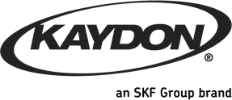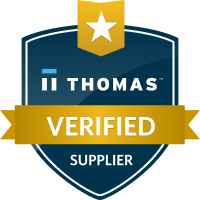
National companies have been struggling with a significant change to branding, marketing, and advertising that has existed since 2007. The Internet industry, specifically search engines, the mobile industry and consumers, are looking for businesses, products, and services in their area using local search. This puts the need for digital branding, marketing, and advertising to the store, office, franchise, or building level.
National companies are not particularly enthusiastic about pushing their branding, marketing, and advertising to the local level due to budgets and the level of work required to manage these activities at the local level. In some cases their ad agencies are avoiding the topic, and in other cases the company’s staff is more focused on advertising and less involved with organic marketing.
The reality is Google is displaying the Google Carousel of local results very prominently at the top of the search results before advertisers. The map local business listings with the corresponding locations appear along with, most importantly, the customer ratings and reviews with yellow stars that stand out to any local consumer. The Google Carousel is making the local consumer decision making process much easier.
Local Store Marketing Factors for Consideration
- These map listings should be actively managed. Passively watching them does not result in visibility.
- Securing the map listings through PIN code verification will help avoid potential hijackings. Using a bulk upload into an account has proven to not have the same level of security.
- The marketing materials can be managed on a per location basis.
- Managing Customer Ratings and Reviews, e.g., responding to all reviews and having a program to solicit new reviews, is imperative to stay competitive.
- Using local social media marketing will be more meaningful to the local consumers.
Local Marketing Process vs. Data Feed Syndication Tasks
If you’re looking for methods to improve your local store placements in Google’s results, there are many factors that go into this marketing process. National companies have been focused on using data feeds through syndication services to push their local store information out to the Internet at large. While this is an admirable starting point, it is exactly that… a starting point.
If you ask the following questions of the marketing process, you may find why the data feeds are not effective to get the local store to show-up in the local search results at Google.
- Have you run a keyword + city ranking report for each location? Do these listings show up in the organic search results? This report alone will show how effective the data feeds really are for marketing.
- Have you PIN code verified each individual location at the top 10 consumer used search engines and websites? Not only to avoid hijackings, but to have the ability to manage the marketing materials and information within the listings.
- Are you actively managing the customer ratings and reviews or just passively waiting for a negative review to show up? Keep in mind even if you are in an industry where you cannot solicit for ratings and reviews, that does not mean the local consumer isn’t posting their feedback.
- Are you using local store landing pages on your corporate website? Do these landing pages use structured data classification?
- Are you using social community business pages at Google+ and Facebook for each location?
Top Local Marketing Activities To Be Found Locally
Unlike advertising, marketing is a process that takes time to build and in most cases requires labor to follow through on the process. You find a starting point and continue to manage the activities based on results. You can then modify these activities as changes occur in the industry, competitors become more competitive, and/or your business changes.
Some of the activities you will start with include:
- PIN code verify listing
- Update the local store information
- Verify the syntax of the address for consistent use
- Confirm business description, categories, map markers, etc.
- Confirm the citations and how they appear to the Internet industry
- Manage Customer Ratings & Reviews including responding to what has been posted
- Check for duplicate listings
- Check for stores that are closed
- Use Google Local Map on your website
- Use Local Social Media Marketing Business Pages
- Engage in Google Adwords Express for Hyperlocal Advertising
- …and, yes, we do need to make sure the data feed syndication is part of this process
The Overall Status of Local Store Marketing
With the Internet industry, mobile industry and local consumers using the results in desktop and mobile searches, insuring local store information is accurate is only the beginning. Getting these stores to show up in the search results requires a strategic marketing program per location. Once the store shows up in the search results there are three additional elements of importance:
1. Each store has current marketing materials in their listings (not only in the corporate website’s landing page).
2. Insure your customer ratings and reviews are compelling for a local consumer to want to shop at your store.
3. That the store’s social media marketing supports local consumer awareness and engagement.
While the traditional yellow pages may no longer be effective, the budget that was once allocated towards these books is now having to be reconsidered (even if partially) for local store marketing and advertising.




















